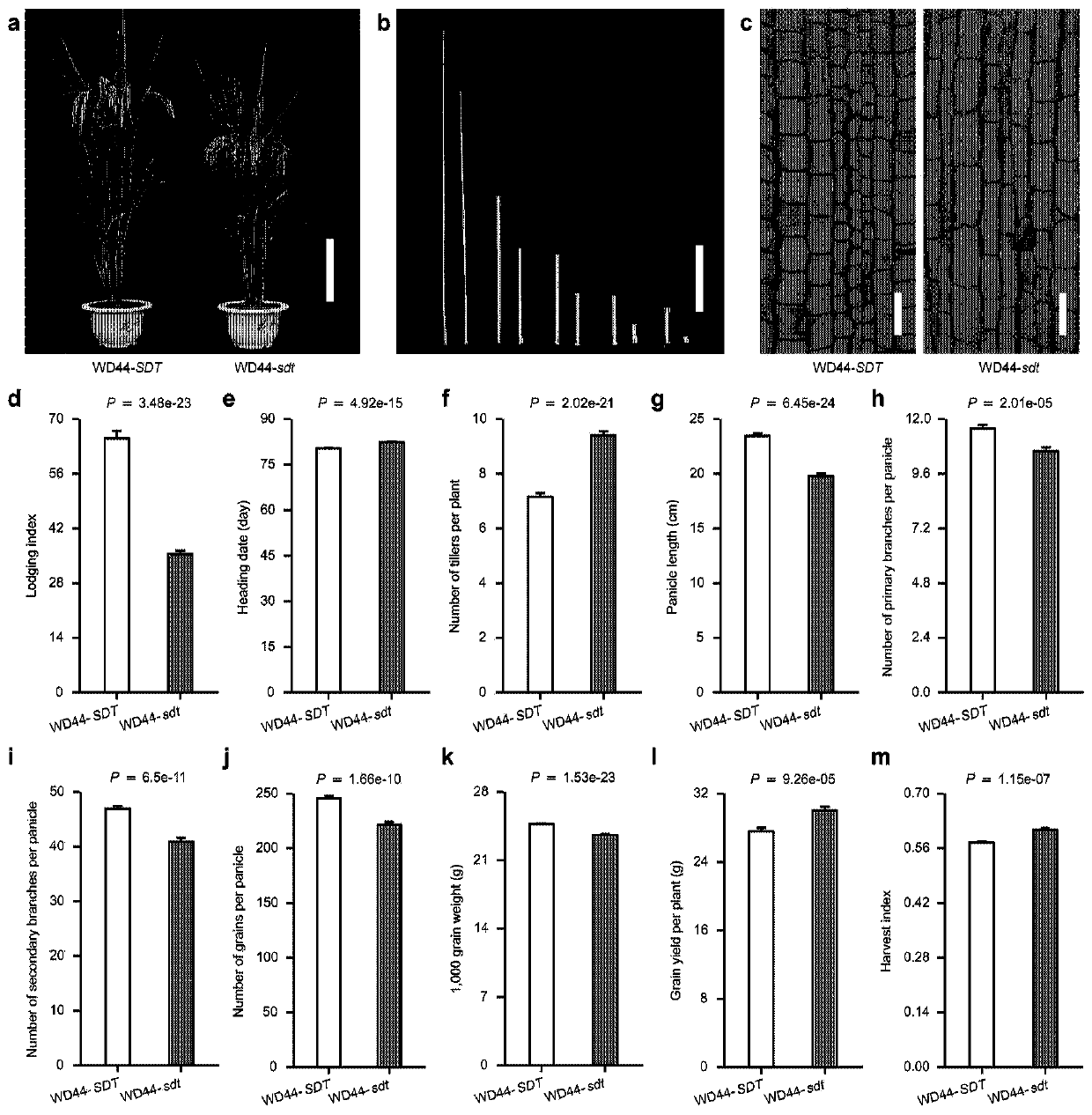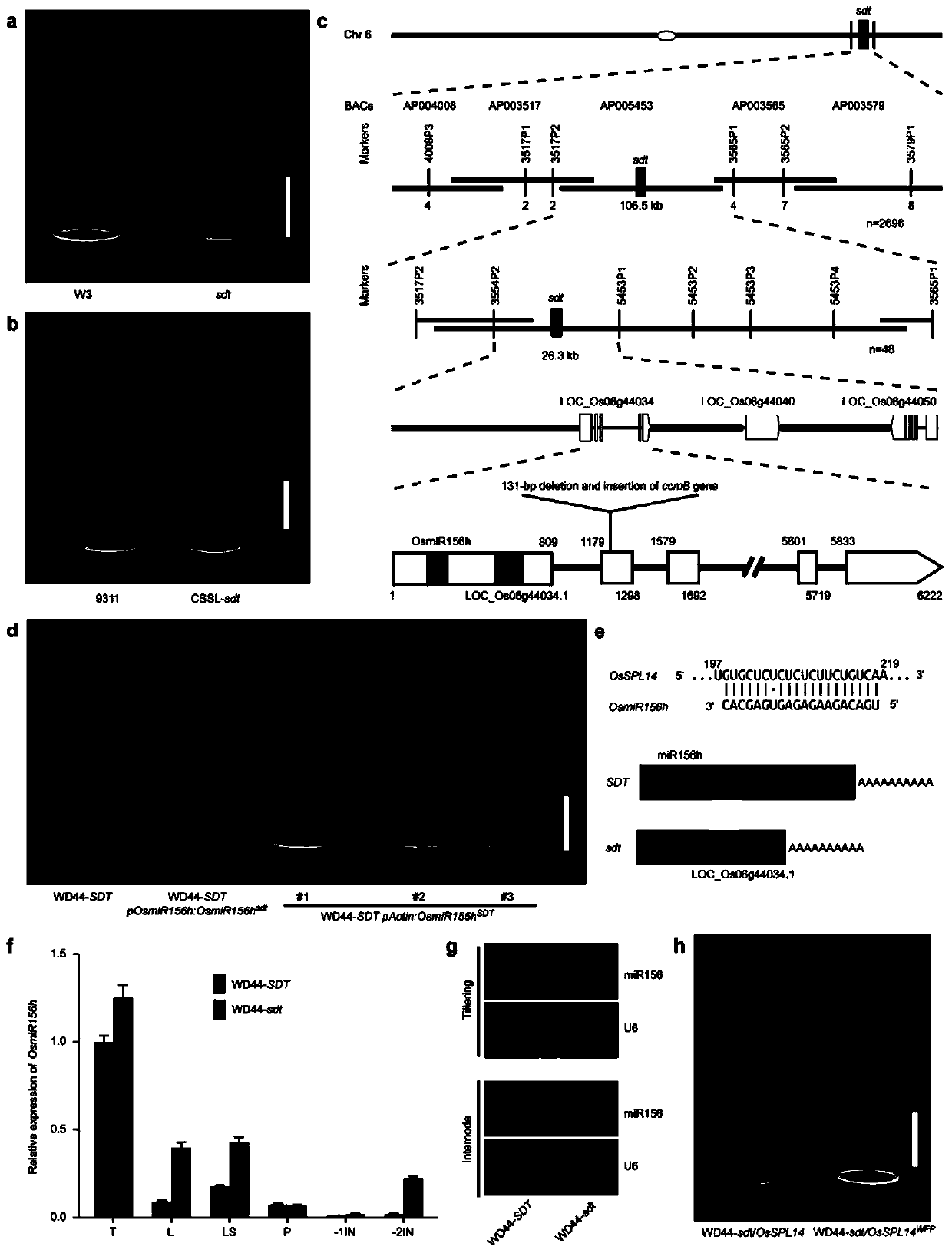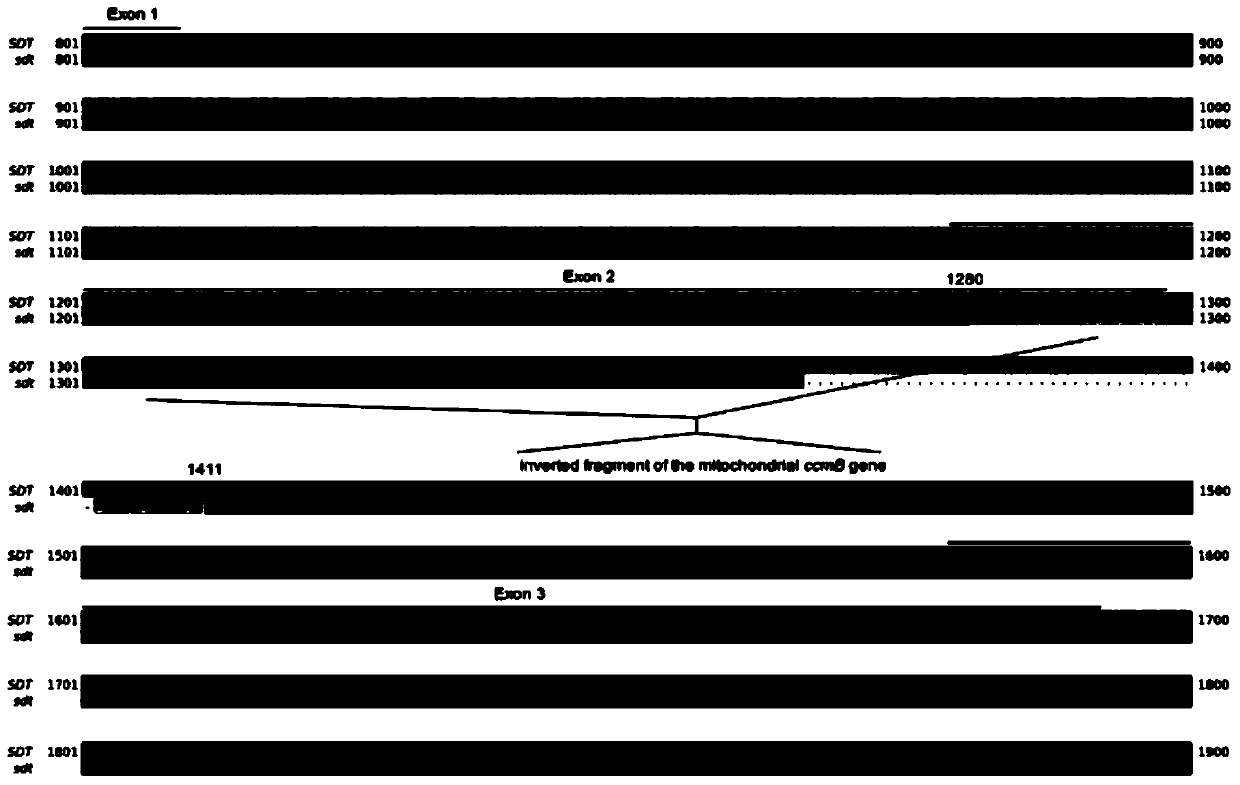Gene for controlling Oryza sativa plant height, enhancing lodging resistance, increasing effective tiller number and yield and its application
A technology of anti-lodging and tiller number, applied in the field of plant biology
- Summary
- Abstract
- Description
- Claims
- Application Information
AI Technical Summary
Problems solved by technology
Method used
Image
Examples
Embodiment 1
[0125] Embodiment 1: Construction of SDT near isogenic line
[0126] The inventor used the conventional japonica rice variety Wandao 44 (approved in Anhui in 1997, serial number: Wanpinshen 97010204) as the recurrent parent, and carried out continuous multiple generations of backcrossing with the naturally mutated semi-dwarf multi-tiller mutant sdt as the donor parent . in bc s f 2 In the population, individual plants were selected based on the phenotype of decreased plant height, increased tiller number, and PCR tracking of the stuck target segment. In addition to selecting the target segment, background scanning was also performed on other chromosome segments other than the target trait, and finally the near isogenic lines Wandao 44-sdt (WD44-sdt) and Rice 44-SDT (WD44-SDT) material was used for follow-up research. For the phenotypes of near-isogenic lines WD44-sdt and WD44-SDT, see figure 1 . According to the comparative analysis of the phenotypes of near-isogenic li...
Embodiment 2
[0132] Example 2: Comparative Study on Agronomic Characters of SDT Near-Isogenic Lines
[0133] The present inventor sows WD44-SDT and WD44-sdt in the experimental base of Science Island in Hefei City, Anhui Province and the experimental base in Lingshui County, Hainan Province respectively (the construction of near-isogenic lines WD44-SDT and WD44-sdt is detailed in Example 1. Introduction, continuous backcrossing for 7 generations to obtain near-isogenic lines), after the plants mature, count the plant height, number of tillers per plant, lodging index, and number of branches per plant (number of tillers per plant). of primary branches), number of secondary branches, panicle length, thousand grain weight (1,000 grain weight) and number of grains per panicle (number of grains per panicle) and yield per plant. See figure 1 .
[0134] Concrete statistical method: after the paddy rice matures, take the panicles on 120 main tillers in the field respectively, count the number o...
Embodiment 3
[0137] Example 3: Controlling Rice Plant Height, Improving Lodging Resistance, Increasing Tiller Number and Yield Gene Acquisition
[0138] The present invention utilizes rice late 3 (higher plant height, average value 108cm) and semi-dwarf multi-tiller sdt mutant (lower plant height, average value 78cm) to construct BC 1 f 2 Groups and BC 1 f 7 polymorphic markers were developed, and the sdt gene was cloned by using map-based cloning technology. The genomic DNA sequence (WD44-sdt gDNA) of the gene is shown in SEQ ID NO:4. The gene contains 4 introns, and the length of the mRNA sequence produced by transcription is 987nt, as shown in SEQ ID NO: 2. An mRNA with a length of 1552nt is transcribed in Wandao 44, as shown in SEQ ID NO: 1. Comparing the DNA sequence differences between WD44-sdt and WD44-SDT, it can be seen that in WD44-sdt there is a deletion of 131 bp from the middle of the second exon to the second intron (1281-1411) of the SDT gene, and the deletion position R...
PUM
 Login to View More
Login to View More Abstract
Description
Claims
Application Information
 Login to View More
Login to View More - R&D
- Intellectual Property
- Life Sciences
- Materials
- Tech Scout
- Unparalleled Data Quality
- Higher Quality Content
- 60% Fewer Hallucinations
Browse by: Latest US Patents, China's latest patents, Technical Efficacy Thesaurus, Application Domain, Technology Topic, Popular Technical Reports.
© 2025 PatSnap. All rights reserved.Legal|Privacy policy|Modern Slavery Act Transparency Statement|Sitemap|About US| Contact US: help@patsnap.com



